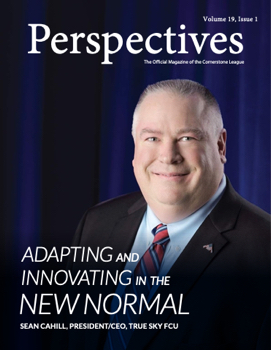
CECL: Expected to raise reserves and concern alike
Effective Jan. 1, 2022, the nation’s credit unions will face what consensus holds is the biggest accounting change for financial institutions in decades.
That’s when member-owned cooperatives will be required to adhere to the current expected credit losses (CECL) methodology introduced by the Financial Accounting Standards Board in 2016.
In a nutshell, CECL will require credit unions and other lenders to predict and account for expected losses over the life of a loan, instead of the current generally accepted accounting principles (GAAP) that require losses to occur before they’re recognized on the books.
The forward-looking approach was created to help shock-proof portfolios against the kind of credit losses that shook the economy after the financial crisis that began in 2007. But it also will have effects seen and unforeseen on how credit unions go about their business, stakeholders say.
While the new CECL guidance affects impairment models for multiple kinds of financial assets—trade receivables and debt securities to name two—the sea change for credit unions could be in reserving for loan losses.
That leads to another possible major effect at some credit unions: A reduction in net worth. The National Credit Union Administration says its examiners will be aware of that when evaluating capital adequacy, and that a new ratio that shows the difference in net worth pre- and post-CECL implementation will be added to each credit union’s Financial Performance Report.
“The board of directors and senior management of your credit union should become familiar with the new accounting standard to assess how the new standard differs from the existing incurred loss model,” former NCUA chair Mark McWatters says in his 2017 letter to credit unions on CECL. “Once familiar with the standard, different allowance estimation methods should be evaluated for appropriateness within your credit union.”
After evaluation comes implementation.
Implementation challenges
A recent survey of 45 clients by Moss & Adams, an accounting and advisory firm that serves a nationwide clientele of financial institutions that includes more than 165 credit unions, identified a list of challenges for implementing CECL standards.
They include:
- Accumulation of historical loan-level data and analysis;
- Applying the concept of reasonable and supportable forecasts; and
- Developing and implementing the actual credit loss models.
About half of those respondents in the survey said they felt very prepared for implementing CECL, and the same proportion said they felt somewhat prepared. Only a couple said they hadn’t read the standard yet.
CECL on the web
Want to study CECL online? Here are two good places to start:
- Financial Accounting Standards Board—Credit Losses Website
- NCUA, Fed, OCC, FDIC—Interagency FAQs on CECL (April 2019)
Source: CreditUnions.com
Subscribe
Sign up to the receive the weekly Leaguer email. Existing subscribers can manage their subscription.

